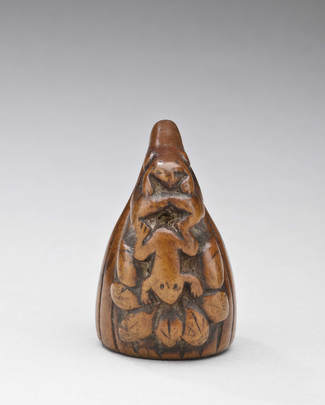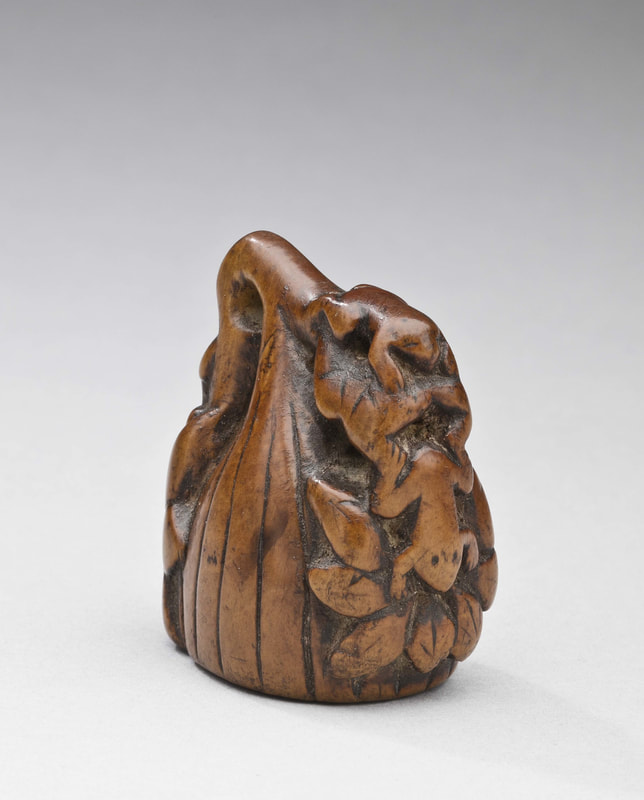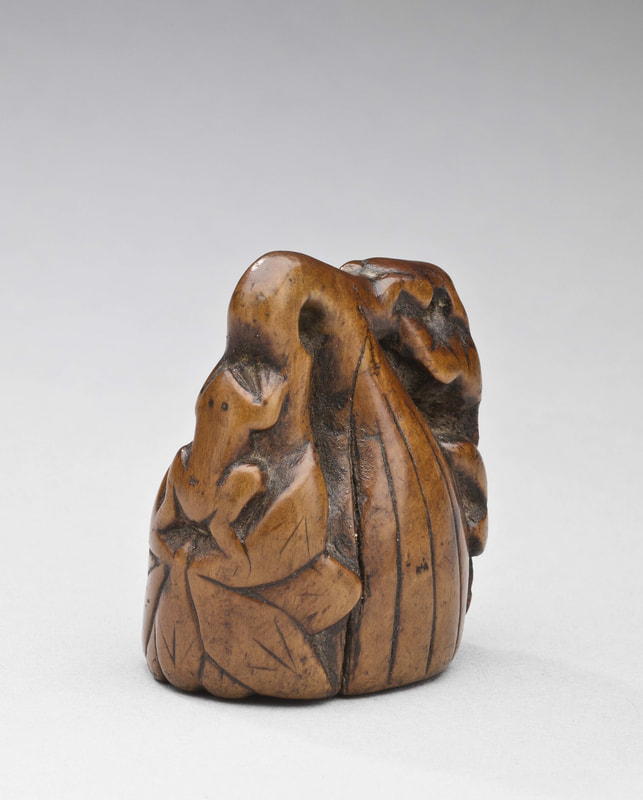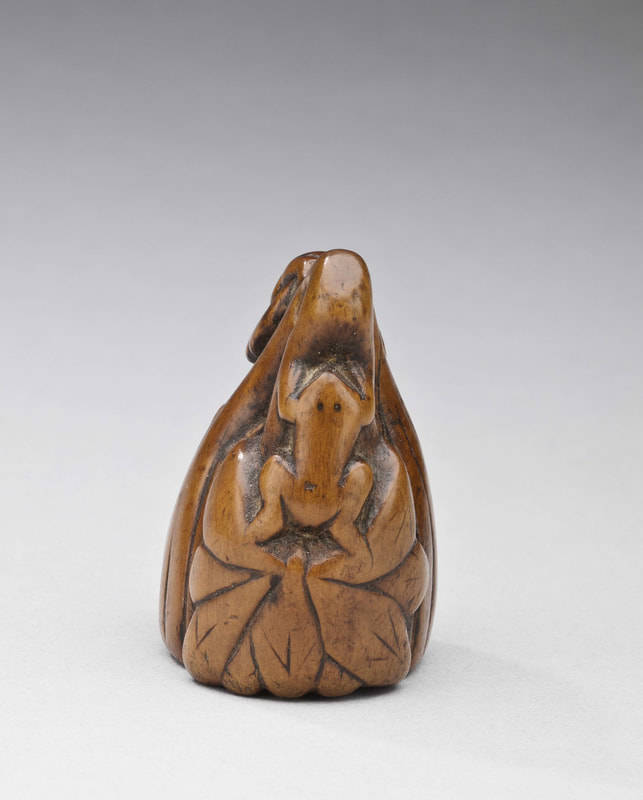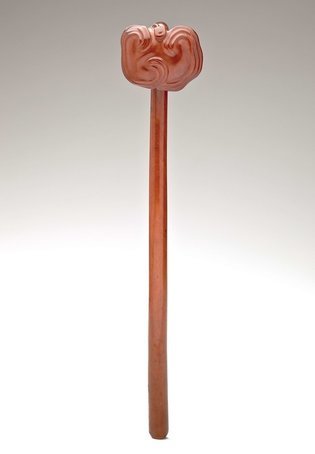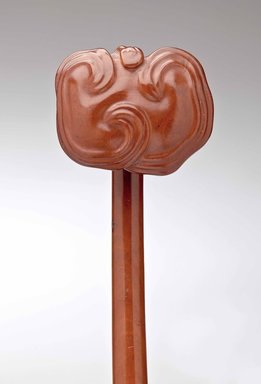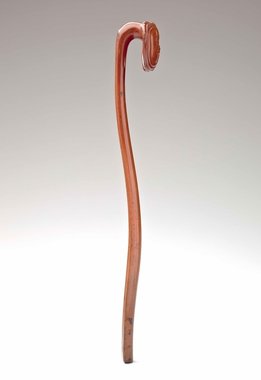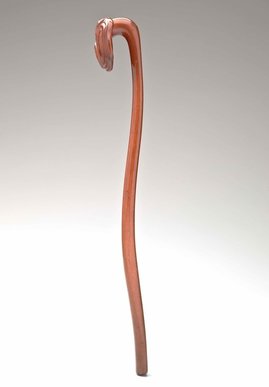|
One of the most whimsical Chinese objects is the belt toggle, a palm-sized carving in nearly every natural material transformed into a miniature sculpture. Compared to the avid collecting of Japanese netsuke, Chinese belt toggles have been oddly overlooked. No longer the curios of Chinese markets, toggles are becoming rarities that are beginning to catch the eyes of collectors who can appreciate their inventiveness and quirky charm.
Chinese belt toggles, or zhuizi (墜子), are ornaments worn principally by men. Traditional Chinese dress does not have pockets, so small bags for tobacco, pipes, money and other accoutrements were suspended from the belt by cords, counterweighted by the toggle. In other circumstances, the toggle adorns the loop of a tobacco pipe or a woman’s embroidered bag for perfume and medicinal powders. Like the netsuke, the Chinese toggle was devised primarily for function and only achieved its status as a unique accessory over time. These toggles became treasured objects of identity and expression, the wearer selecting toggles that were not only decorative but that had seasonal, magical, medicinal or auspicious connotations. The material chosen and the motif represented were personal statements of style and of symbolic meaning. Chinese toggles come in an astonishing range of materials—from wood and ivory to seashells, seeds, brass, glass, porcelain, jet, turquoise, amber and jade. Though we might assume that the wealthier would select a precious material such as crystal or jade, wooden toggles have broad significance. Boxwood (huangyangmu) was ideal for the carver. A widely available timber, boxwood is slow growing and has a very fine grain and density, which make it perfect toggle material. Carvers could work in minute detail and add intricate and precise designs without splitting the wood. The choice of boxwood also was dictated by the belief that box, being an evergreen plant, was highly auspicious—evergreens retain their leaves throughout all harsh conditions, surviving hard winters and summer droughts. The Chinese consider boxwood to be the essence of long life, energy and good health, representative of the yang principle in the harmonic structure of the cosmos. Box leaves themselves were used in medicine, and ash from burnt box timber was used medicinally from cooling fevers to helping ease labour pains for women in childbirth. Practically then, a householder wearing a boxwood toggle had his very own first-aid kit. Each toggle symbolises something, be it the wood itself for good health or for auspicious reasons. The carvings are as varied as their materials—from temples and immortals to longevity fungus, animals of the zodiac, lions, legumes, babies, dustpans and shoes. A toggle in the form of a reed mouth organ, a sheng, is a homophone for sheng, “to rise in rank” or “to give birth”; a water bucket is a homophone for “unite” and “boy,” a fortuitous wish for marital bliss and fecundity. With their infinite possibilities for word play and association, toggles eclipsed their practical purpose and have become successively prized as objects of fascination. Like ornaments on modern key rings and mobile phones, toggles were important to the wearer but not always to contemporary documentarians. This has made it difficult to trace their histories. Like interest in the netsuke of Japan, scholarly attention to Chinese toggles has been generated by modern Westerners. Caroline Bieber, an American who lived in Peking during the 1920s and 1930s, assembled a comprehensive collection of toggles that she donated to The Field Museum of Chicago. Schuyler Cammann, the curator of Far Eastern Art at the University Museum, Philadelphia, published the Bieber toggle collection in Substance and Symbol in Chinese Toggles (1962), still one of the definitive works in the field. A recent addition to the literature is Margaret Duda’s Traditional Chinese Toggles: Counterweights and Charms (2011). She illustrates a toggle carved with frog and lotus similar to the boxwood toggle we show here dating from the Qing dynasty, 19th century. The toggle has two frogs climbing down one side, a single frog climbing down the other, the underside with lightly incised seed pods and the stem curving over to form a loop for the cord. In discussing the fertility symbolism of the frog, Cammann comments that the Chinese, unlike most Westerners, found the frog an intriguing creature inhabiting two worlds as an amphibian with prolific powers, despite its lack of obvious generative organs (p. 130). Duda adds that the lotus is a homophone for “continuous connection,” implying a blessing for a long line of sons. Still affordable and with an appealing diversity of subject, symbolism, style and material, Chinese toggles are ideal collector’s objects for those looking, as Schuyler Cammann put it, for “subtle beauty, glimpses of inner wisdom and sheer pleasure.” Rebecca Gardner and Jane Oliver
|
